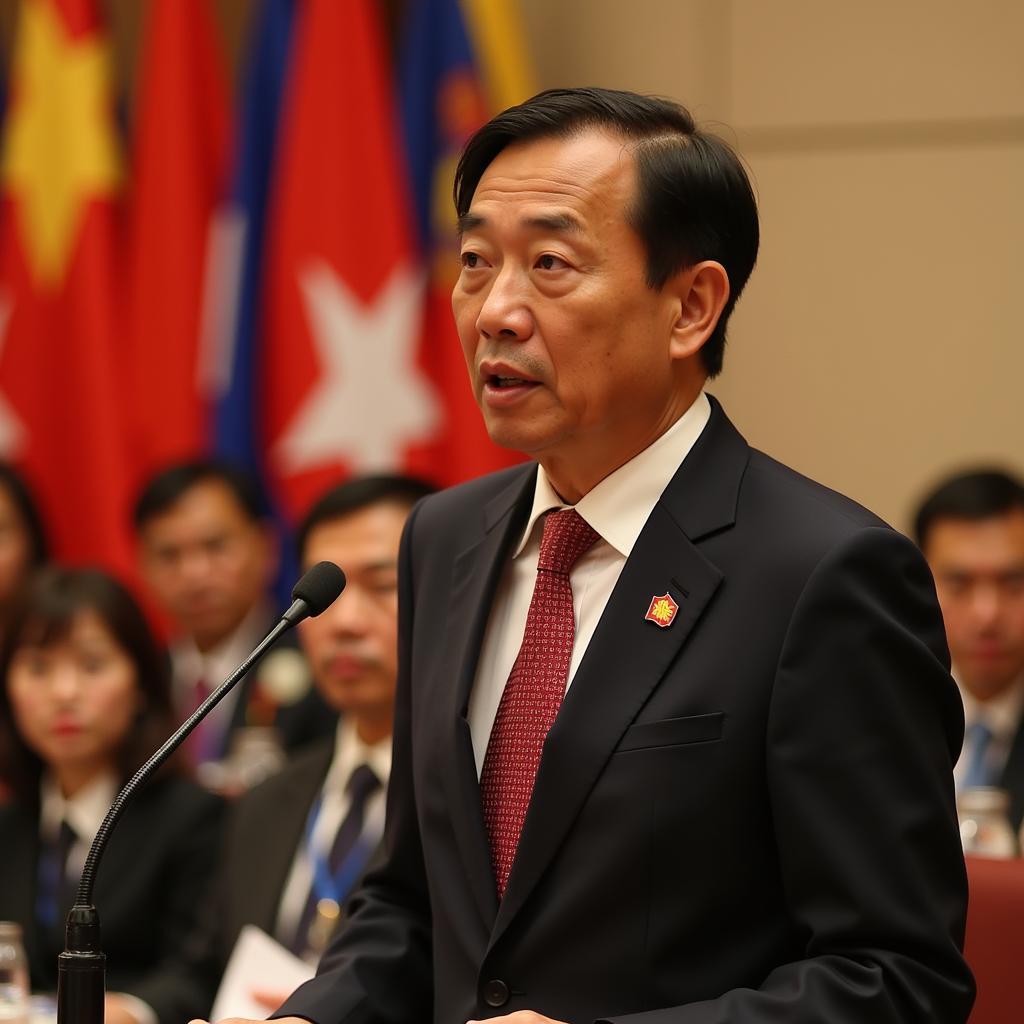The Asean And India Automobile Market presents a compelling narrative of growth, innovation, and strategic collaboration. With ASEAN’s burgeoning middle class and India’s rapidly expanding automotive sector, the synergy between these two dynamic regions is reshaping the global automotive landscape.
Driving Growth: Factors Shaping the ASEAN-India Automotive Landscape
Several key factors underpin the robust growth trajectory of the ASEAN and India automobile market:
- Rising Disposable Incomes: A burgeoning middle class in ASEAN, coupled with increasing disposable incomes in India, fuels the demand for personal vehicles.
- Favorable Demographics: A young population in both regions translates to a larger potential customer base seeking mobility solutions.
- Urbanization and Infrastructure Development: Rapid urbanization across ASEAN and India necessitates efficient transportation systems, driving demand for passenger cars and commercial vehicles.
- Government Initiatives: Supportive policies, such as tax incentives for electric vehicles and investments in infrastructure, are fostering automotive industry growth in both regions.
ASEAN: A Hub for Automotive Manufacturing and Export
ASEAN has emerged as a global hub for automotive manufacturing and export, attracting significant investments from major international automakers. Countries like Thailand, Indonesia, and Malaysia have well-established automotive ecosystems, producing a wide range of vehicles, from small cars to commercial trucks.
- Thailand: Known as the “Detroit of the East,” Thailand is a leading automotive manufacturer and exporter in ASEAN.
- Indonesia: With a large domestic market, Indonesia is a key production base for Japanese automakers.
- Malaysia: Home to national car companies like Proton and Perodua, Malaysia is focusing on developing its electric vehicle (EV) industry.
India: An Emerging Automotive Powerhouse
India’s automotive industry has witnessed remarkable growth, transforming the nation into a global automotive powerhouse.
- World’s Third-Largest Car Market: India has surpassed Japan to become the world’s third-largest car market, driven by strong domestic demand and a growing export market.
- Hub for Small Cars and Two-Wheelers: India excels in the production of compact, fuel-efficient cars and two-wheelers, catering to the needs of its price-sensitive market.
- Growing EV Adoption: India is aggressively promoting electric mobility, with government incentives and infrastructure development plans to accelerate EV adoption.
Synergies and Opportunities: ASEAN-India Automotive Partnership
The convergence of ASEAN’s manufacturing prowess and India’s growing market presents significant synergies and opportunities:
- Trade and Investment: The ASEAN-India Free Trade Agreement (AIFTA) has facilitated increased trade in automotive components and vehicles.
- Technology Transfer: Collaboration in areas such as electric vehicle technology, autonomous driving, and connected mobility solutions benefits both regions.
- Joint Ventures and Partnerships: Several Indian automotive companies have established manufacturing facilities in ASEAN, while ASEAN automakers are exploring opportunities in the Indian market.
Challenges and the Road Ahead
While the outlook for the ASEAN and India automobile market remains positive, certain challenges need to be addressed:
- Supply Chain Disruptions: Global semiconductor shortages and logistical bottlenecks pose challenges to production and timely deliveries.
- Competition from China: Chinese automakers are aggressively expanding their presence in both regions, intensifying competition.
- Infrastructure Development: Continued investment in infrastructure, particularly charging stations for EVs, is crucial to support sustainable growth.
Conclusion: A Transformative Partnership
The ASEAN and India automobile market is a testament to the transformative power of regional collaboration. As both regions continue to invest in innovation, technology, and sustainable mobility solutions, the partnership between ASEAN and India is poised to redefine the future of the global automotive industry.
Do you have questions about the dynamic automotive landscape in ASEAN and India?
Here are some frequently asked questions:
FAQ
-
What are the key drivers of growth in the ASEAN and India automobile market?
Rising disposable incomes, a young population, urbanization, and government support are key growth drivers.
-
Which ASEAN countries are major automotive manufacturers?
Thailand, Indonesia, and Malaysia are leading automotive manufacturing hubs in ASEAN.
-
What is India’s position in the global automotive market?
India has become the world’s third-largest car market, known for its production of small cars and two-wheelers.
-
How are ASEAN and India collaborating in the automotive sector?
Collaboration includes trade agreements, technology transfer, and joint ventures in manufacturing and research.
-
What challenges does the ASEAN and India automobile market face?
Challenges include supply chain disruptions, competition, and the need for continued infrastructure development.
Explore More:
Need more information about ASEAN and the India automobile market?
Contact us at:
- Phone Number: 0369020373
- Email: aseanmediadirectory@gmail.com
- Address: Thon Ngoc Lien, Hiep Hoa, Bac Giang, Vietnam.
Our dedicated customer support team is available 24/7 to assist you.
